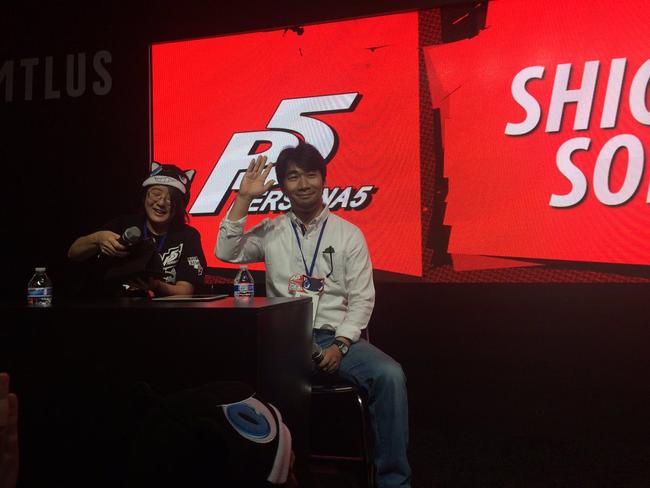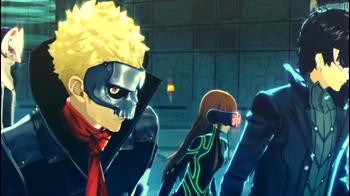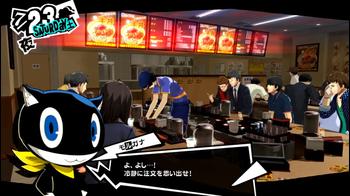
Persona 5 Q&A with character designer Shigenori Soejima
During the first official day of E3 2016, Sega built a stage to host the different games they will be publishing in North America. One of the most anticipated titles they presented was Persona 5.
Following a gameplay demonstration, character artist Shigenori Soejima spent an hour answering various questions presented by a company representative. Here is a non-verbatim transcription of that discussion.

Atlus: Where do you get your sense of style?
Soejima: I began working on designs for Persona 5 during Persona 4. Those designs spilled over more to Persona 5 as the story was fleshed out.
Atlus: The design of the school uniforms in Persona is aggressive. Do you put a lot of work into the color choices?
Soejima: Red wasn't decided to begin with. P3 was blue, P4 was yellow. Red is a very passionate color, so it was naturally chosen to be 5's color.
Atlus: Persona 3 and 4 were in countryside towns. Does the city give you more leeway in your work?
Soejima: I hope that by playing P5, the fans can get a taste of what living in Tokyo is like. It is more average than the country side.
Atlus: Who do you think will possibly be the most popular character in Persona 5? [at this point, the rep pointed out a Chie Satonaka cosplayer in the audience and Soejima looked excited]
Soejima: I don't understand how you even create a character so popular. Your first impression is always their look. I hope that you'll fall in love with characters by these new interactions.
Atlus: We see headphones a lot on your characters. Is there something you signify with this?
Soejima: The Persona 3 protagonist was shutting himself away from other people. Persona 4's Yosuke was more in touch with what's popular. That's why they wore them. You'll have to wait to see why they're worn in Persona 5. Music is a huge part of Persona as a whole, so I always want to have a character connect to that aspect of the games.
Atlus: When you design a character, what's harder? Starting a new design or trying to finish up by adding unique features?
Soejima: Starting from the beginning is the hardest. It's not even just about one individual - I find it hardest to make them work together as a whole group. I have to consider the end result of the party's style.
Atlus: You live in Tokyo. Do you see anyone on your commute and think that person belongs in a video game?
Soejima: I create characters I feel like I could recognize in real life. I don't actually see someone and use their image. I see a variety of people and pay attention, like the tired salarymen. I want those types of people to appear in Persona 5.
Atlus: Are you nervous making a new Persona game, hoping to continue its legacy?
Soejima: Yes, there is some nervousness. However, a lot of the staff is still the same, like Hashino and Meguro. But expectations are high because how long we've had since the last Persona game.
Atlus: It has been 8 years since Persona 4 and there have been lots of changes in real-life culture. What changes have you seen in the newer generation?
Soejima: Teenagers haven't changed as much as other people. The change of stage still effects how these teenagers act though. It's different in how they communicate in the country versus the city. We think Persona 5 reflects these changes.
Persona 5 is scheduled to be released for the PlayStation 4 and PlayStation 3 in Japan on September 15th, followed by a release in North America next year on February 14th. There has yet to be an announcement of a European release date.

